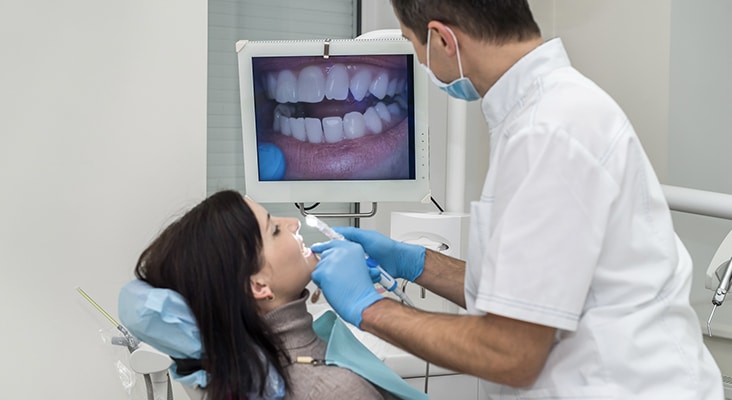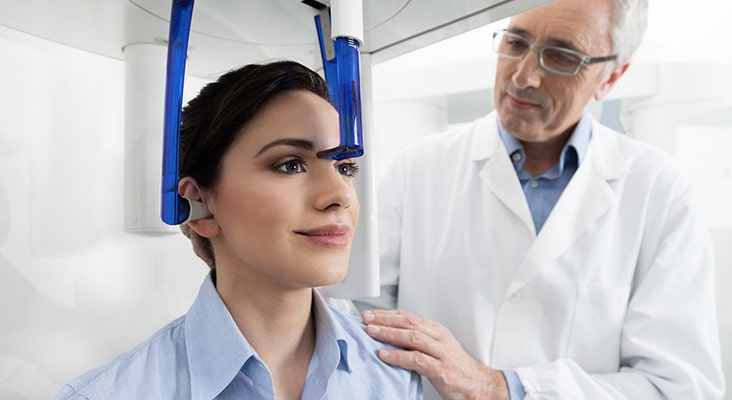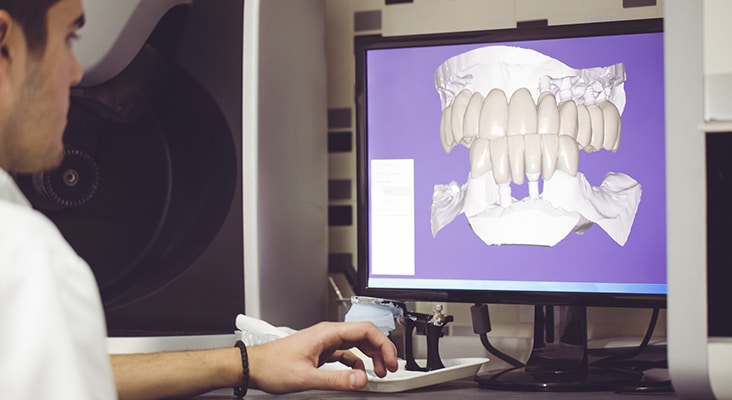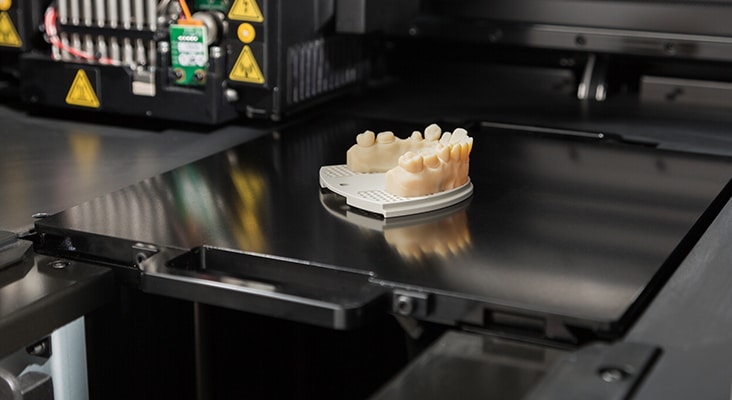Benefits of Digital Technology
Over the years, innovations in dentistry have changed the way oral health professionals manage patients.

Over the years, innovations in dentistry have changed the way oral health professionals manage patients. In modern dentistry, digital technology has provided new diagnostic tools, documentation capabilities, and manufacturing technologies that enhance oral health professionals’ abilities to provide optimal care.
Photo Credit: photoman / iStock / Getty Images Plus

Electronic Health Records
Digital technology has made record keeping simple. Clinical records can be collected in digital formats using one of several electronic dental records. Medical and dental histories can be obtained remotely and evaluated prior to a patient’s in-person evaluation. A current limitation of electronic dental records is that they are largely incompatible with existing electronic health records. With the growing emphasis on the association between oral health and systemic health, the need to communicate easily and accurately with physicians, nurses, pharmacists, and other allied health professionals increases every day. Thus, the integration of electronic dental records with electronic health records should be promoted interprofessionally.
Photo Credit: LaylaBird / E+

Intraoral Photography
Intraoral photography is useful for documentation and patient communication, as it can be performed in real time. Seeing images of their own mouths can be a remarkable motivator for patients. Such images facilitate discussions regarding patients’ needs at the time of treatment planning. Digital photographs can also be incorporated into esthetic treatment planning, in which patients can envision the beneficial effects of therapy before treatment begins. As part of the digital dental record, intraoral and peri-oral photographs facilitate longitudinal assessments of oral health and improve communication between dental team members. Finally, intraoral photography contributes to the integrity of dental records from medico-legal perspectives.
Photo Credit: alfexe / iStock / Getty Images Plus

Three-Dimensional Imaging
The advent of three-dimensional (3D) imaging systems has afforded new advantages to clinical practice. Cone-beam computed tomography (CBCT) provides clinicians with important diagnostic information, especially useful for implant planning, oral maxillofacial and orthodontic treatment planning, and endodontic diagnostics. CBCT images are often fundamental to the communication and planning needed for complex, multistep dental procedures. These images can support communication among health care providers and laboratory technicians. The Digital Imaging and Communications in Medicine, or DICOM file format has been adopted for dentistry, providing a common output file format that may be imported and reformatted by a number of software programs. While most patients will not require 3D imaging for routine dental care, 3D images may facilitate planning and provide intra-operative guidance for more complex procedures, such as implant placement and third molar extractions.
Photo Credit: SerafinoMozzo / iStock / Getty Images Plus

Digital Impressions
Intraoral surface-scanning is an alternative to conventional impressions. Scanners have proven to be accurate replacements for elastomeric materials in some situations. Today, scanners are commonly used to provide intracoronal (inlay, onlay) and extracoronal (crown) restorations, small fixed dental prostheses (especially provisional restorations), and orthodontic appliances. Continued development is focused on the scanning of partially and completely edentulous patients in order to facilitate digital clinical work flows that complement existing digital laboratory work flows for removable partial denture frameworks and complete dentures. One factor that has contributed to the value of intraoral scanners as impression-making devices has been the continuous improvement of milled materials. Milled lithium disilicate or zirconia restorations are inexpensive and provide good esthetics and marginal adaptations. Additional developments in materials and milling technologies will likely provide even greater clinical advantages for digitally manufactured ceramic crowns. Also, if ceramic crowns are not indicated, metal crowns can be manufactured using the same design software. It is now possible to create most intracoronal and extracoronal restorations using the digital technology widely available in dental laboratories.
Photo Credit: zoranm / E+

Intraoral Scanning
Intraoral scanning is the front end of one of two clinical work flows. The first approach, known as “scan and mill,” involves the scanning and immediate milling of a restoration for delivery within a single appointment. The advantages of immediacy and the absence of provisionalization are obvious. The relative disadvantages are the need to acquire the necessary skill set and the time needed to deliver high-quality milled restorations. The second approach is referred to as “scan only.” This involves scanning a preparation and sending the data to a laboratory for production of the desired restoration. Advantages of the scan-only technology are the leveraging of laboratory expertise to create remarkable restorations, avoiding the capital expenditures and space requirements needed for computer-aided design and computer-aided manufacturing (CAD/CAM) equipment, and preventing the loss of the valuable clinical time needed to design and mill the restorations.

